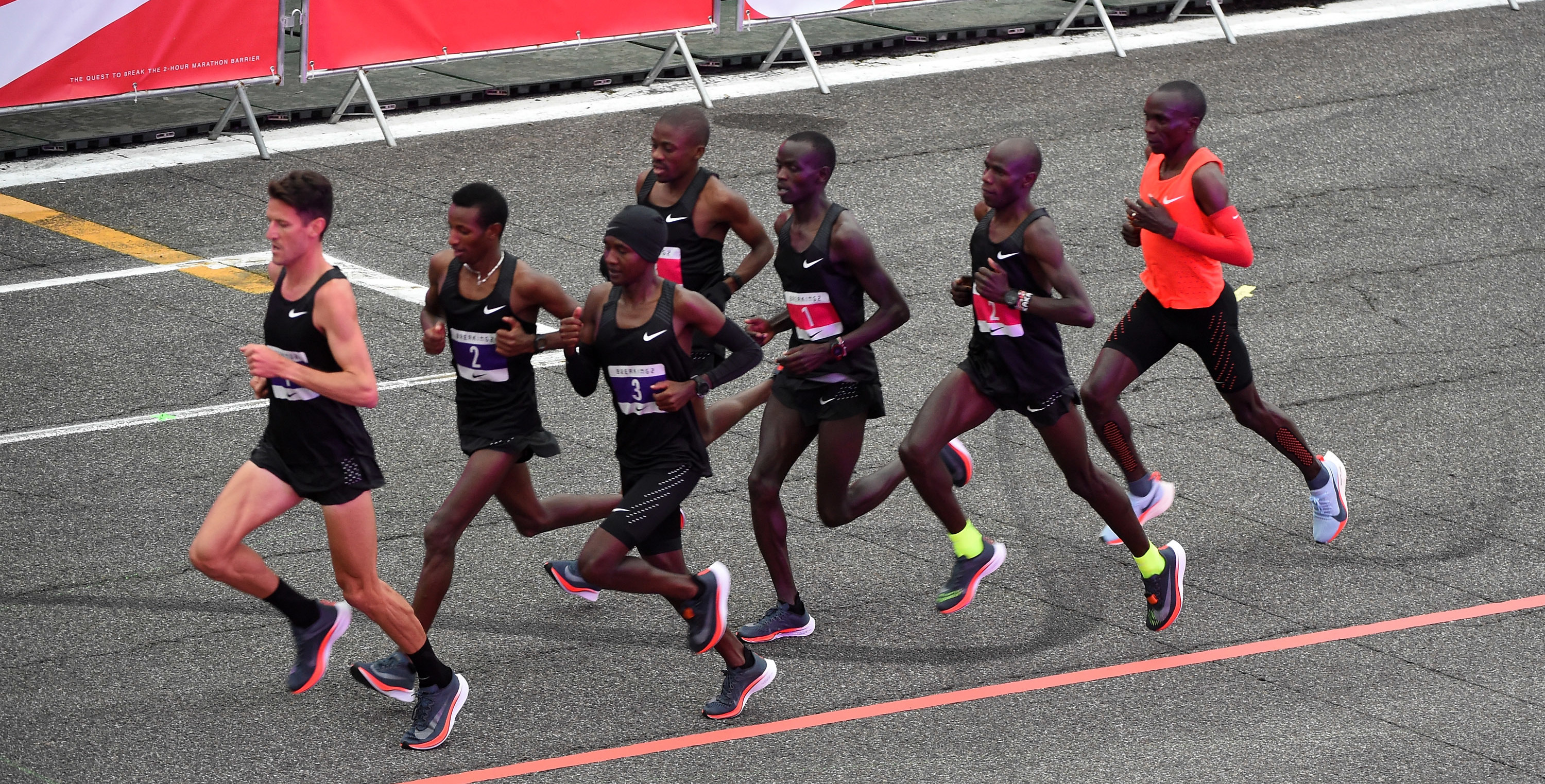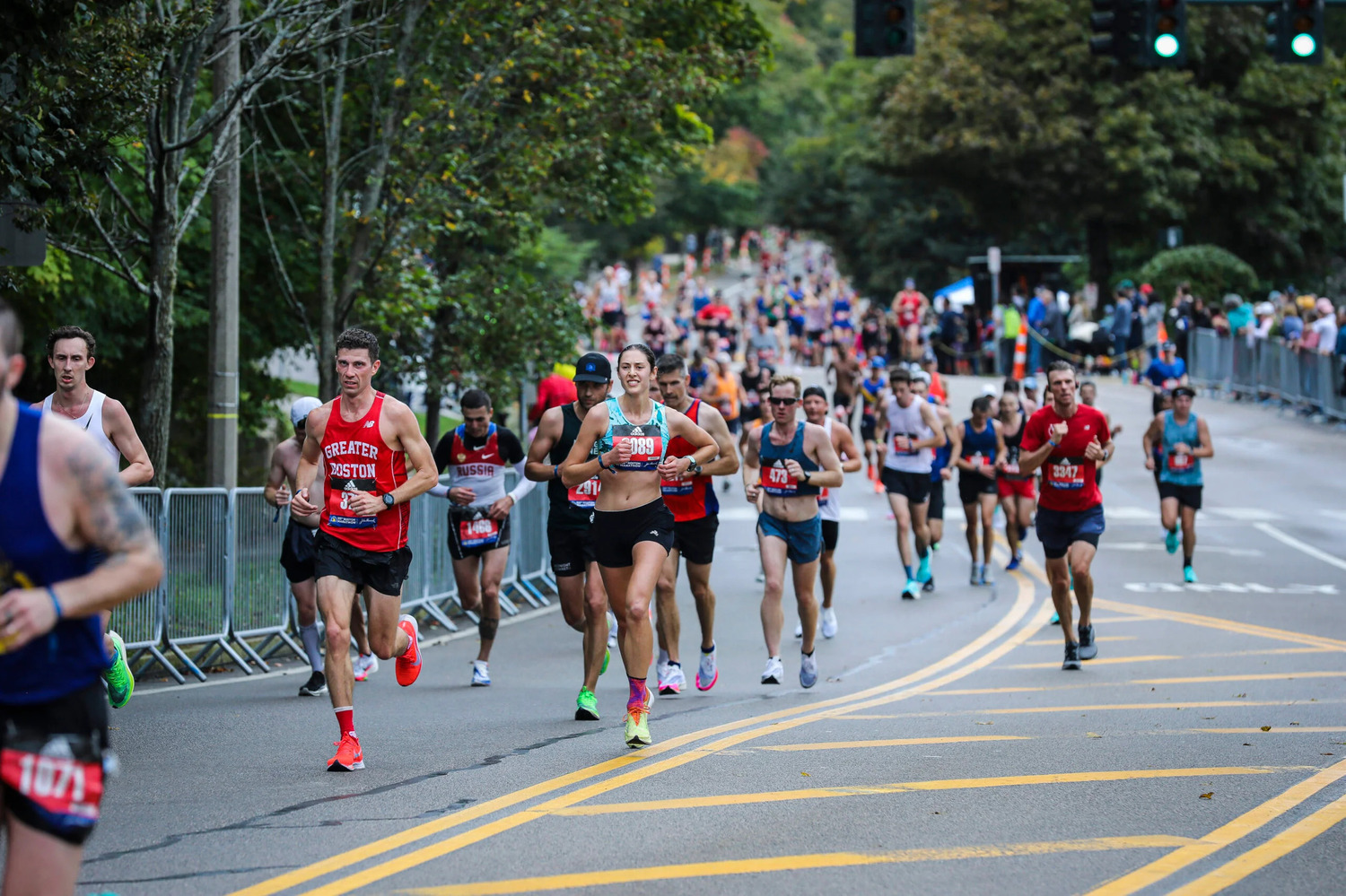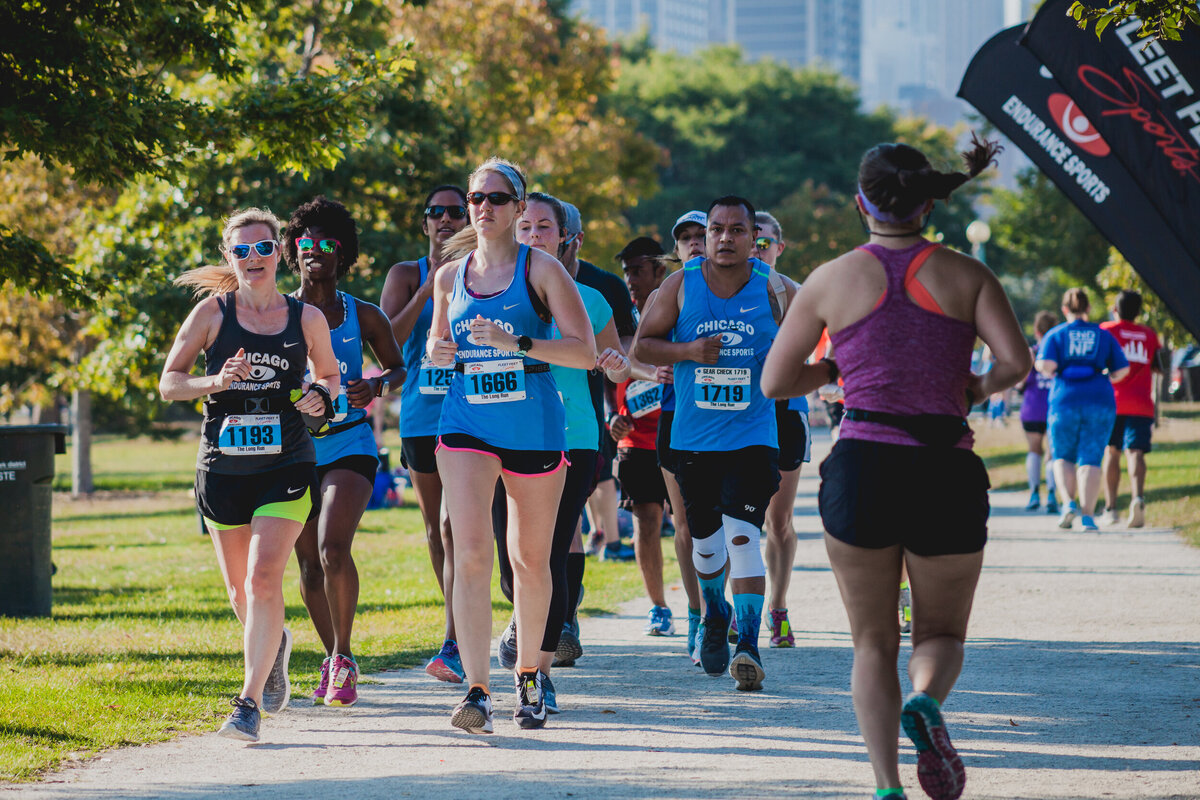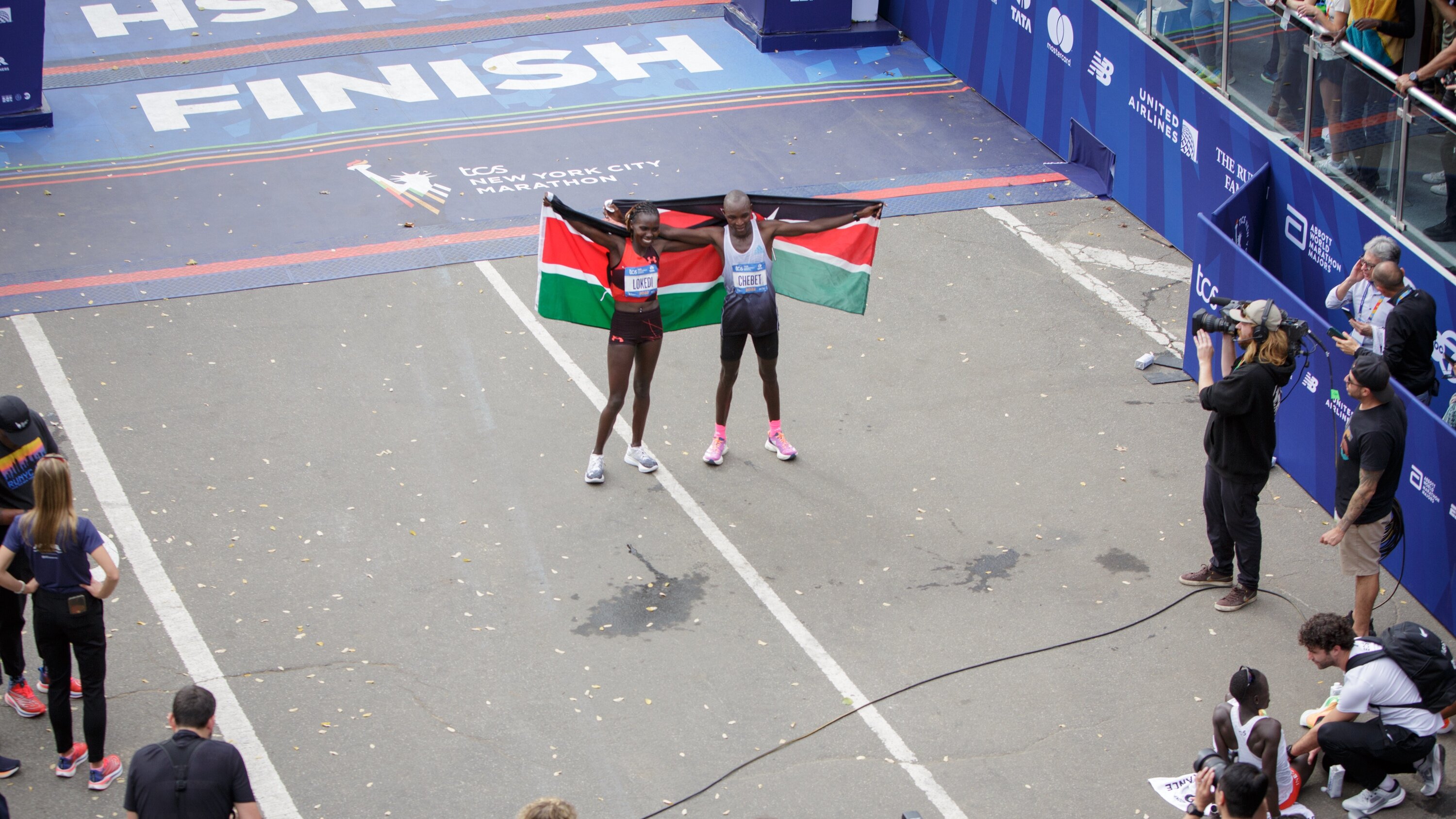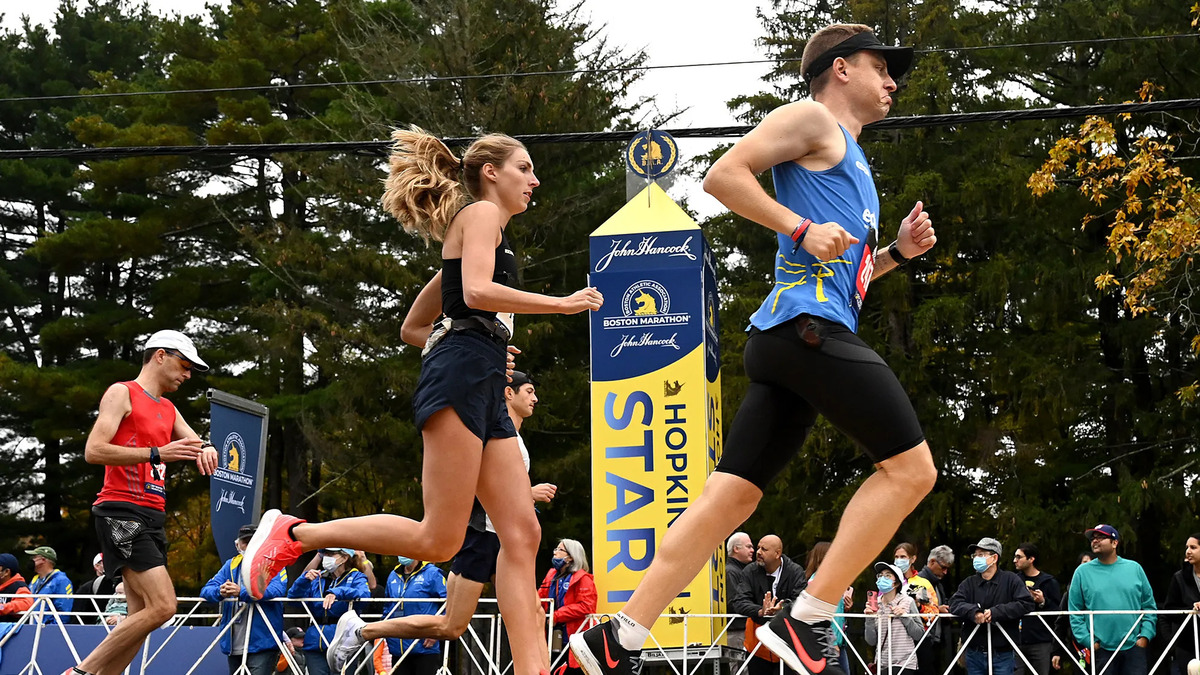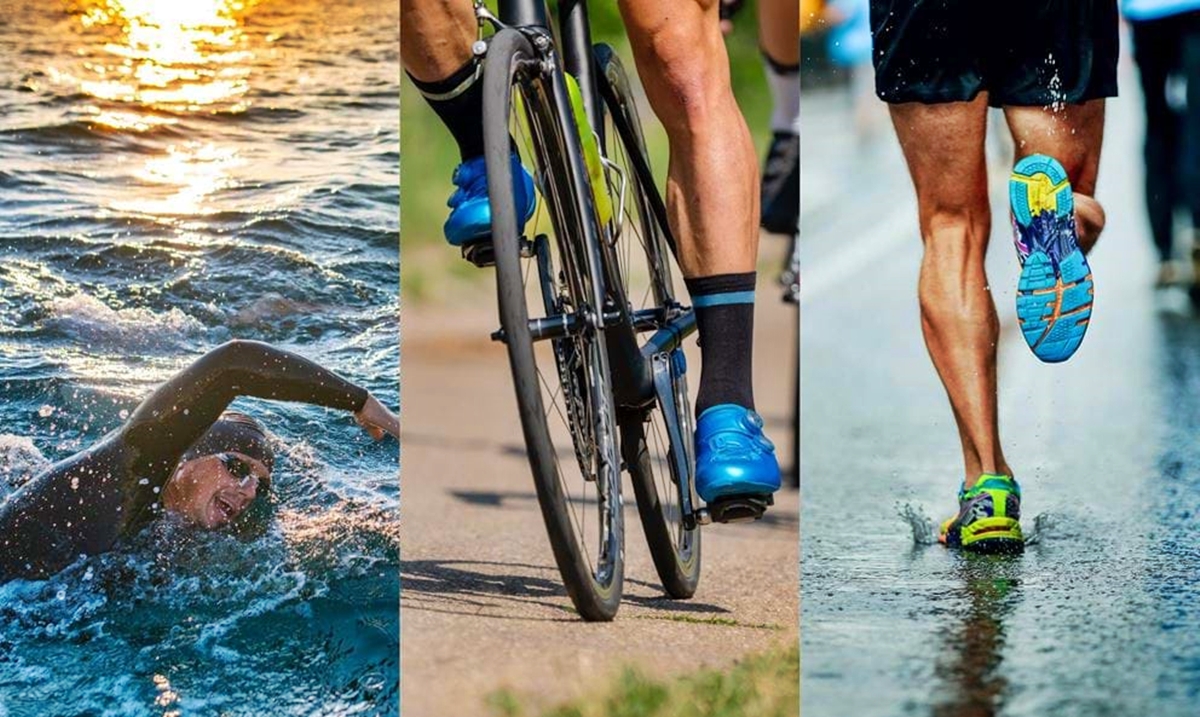

Featured
How Fast Is The Average Human Sprint
Modified: August 21, 2023
Discover how fast the average human can sprint in this featured article. Get insights into sprinting speeds and compare them to world records for a thrilling glimpse into human athleticism.
Introduction
Welcome to the fast-paced world of sprinting! When it comes to human movement, few activities capture our attention and admiration quite like sprinting. The sheer speed, power, and grace exhibited by sprinters is truly awe-inspiring. Whether it’s on the track, in the Olympics, or in your local park, sprinting is a thrilling display of athleticism.
But have you ever wondered just how fast the average human can sprint? What factors come into play when it comes to achieving top speeds? And are there any differences in sprinting speed between individuals, genders, or as we age?
In this article, we will explore the fascinating world of sprinting and delve into the average human sprinting speed. We will uncover the various factors that influence our ability to sprint and examine any variations or differences that exist among individuals. Additionally, we will touch upon the impact of gender and age on sprinting speed. Lastly, we will explore training techniques and strategies for improving our sprinting abilities.
Whether you’re an aspiring sprinter, a sports enthusiast, or simply curious about the limits of human performance, this article will provide you with valuable insights into the world of sprinting and the average human sprinting speed.
So, lace up your running shoes, stretch those muscles, and get ready to dive into the exciting world of sprinting!
Definition of Sprinting
Sprinting can be defined as the act of running at maximum speed over a short distance. It is a high-intensity, explosive form of running that requires great power, strength, and coordination. Unlike long-distance running, which focuses on endurance, sprinting is all about achieving maximum velocity within a limited timeframe.
Typically, sprinting distances range from 100 meters to 400 meters, with the most renowned events being the 100-meter and 200-meter sprints in track and field competitions. However, the concept of sprinting is not restricted to professional athletes. Many recreational runners also incorporate sprints into their training routines to improve overall speed and cardiovascular fitness.
During a sprint, runners use a combination of muscle groups to generate explosive force and propel themselves forward. The muscles of the legs, including the quadriceps, hamstrings, and calf muscles, play a crucial role in generating the necessary power and speed. The core muscles also provide stability and aid in maintaining an efficient running form.
It is important to note that sprinting is not just about pure speed; it also involves proper technique and biomechanics. A sprinter must optimize their stride length, cadence, arm movement, body position, and breathing to achieve maximum efficiency and speed. This requires a combination of strength, coordination, and agility.
While sprinting is often associated with track and field events, it is also a fundamental component of many team sports. In sports such as soccer, basketball, and football, athletes often need to sprint short distances to make quick breaks, evade opponents, or reach a target area.
Overall, sprinting is an exhilarating form of running that pushes the limits of human speed and power. Whether it’s in competitive races or everyday activities, mastering the art of sprinting can have a significant impact on overall performance and athletic ability.
Factors Affecting Sprinting Speed
Several factors contribute to the overall sprinting speed of an individual. Understanding these factors can help athletes and enthusiasts optimize their performance and reach their full sprinting potential. Let’s explore some of the key factors that influence sprinting speed:
- Genetics: Our genetic makeup plays a significant role in determining our sprinting abilities. Certain genetic traits, such as fast-twitch muscle fiber composition and muscle structure, can contribute to better speed and explosiveness. While genetics can set the foundation, it is important to note that training and technique still play a crucial role in maximizing sprinting potential.
- Muscle strength and power: The strength and power of our muscles directly impact sprinting speed. Stronger muscles generate more force, enabling a runner to push off the ground with greater power and move their body forward more efficiently. Building and maintaining strong leg muscles, especially the quadriceps and hamstrings, is essential for sprinting performance.
- Biomechanics and technique: Effective sprinting requires optimal biomechanics and technique. Factors such as stride length, stride frequency, arm movement, body position, and foot strike pattern all contribute to overall sprinting speed. For instance, a longer stride can cover more ground with each step, while proper arm swing helps maintain balance and rhythm.
- Explosive power: Sprinting demands explosive power, which involves the rapid recruitment of muscle fibers to generate force quickly. Plyometric exercises, such as squat jumps and box jumps, can improve explosive power and contribute to faster sprinting speeds.
- Flexibility and range of motion: Adequate flexibility and range of motion in the muscles and joints are important for achieving the optimal stride length and reducing the risk of injury. Regular stretching and mobility exercises can help improve flexibility, allowing for more efficient movement and better sprinting speed.
- Mental and psychological factors: Sprinting requires strong mental focus, concentration, and determination. Factors such as confidence, motivation, and the ability to handle pressure can all influence sprinting performance. Developing mental resilience and employing effective psychological strategies can enhance sprinting speed.
It is important to note that these factors are interconnected and often overlap. Working on improving one aspect can lead to improvements in others as well. Moreover, the impact of each factor can vary from person to person, highlighting the individual nature of sprinting speed.
By understanding and addressing these factors, individuals can work towards optimizing their sprinting performance and unlocking their full potential on the track or in any sprinting activity.
Average Sprinting Speed of Humans
The average sprinting speed of humans can vary depending on several factors, including genetics, training, and technique. While it is challenging to determine an exact average, various studies and data provide us with some insights into the typical sprinting speeds of individuals.
For the average untrained individual, a sprinting speed of around 8 to 10 miles per hour (12 to 16 kilometers per hour) can be considered typical. This equates to a pace of roughly 7.5 to 9 seconds per 100 meters. However, it is essential to note that these figures can differ significantly between individuals, as factors such as age, fitness level, and natural ability come into play.
Professional sprinters, on the other hand, achieve much faster speeds. The current world record for the men’s 100-meter sprint is held by Usain Bolt, who clocked an astonishing time of 9.58 seconds in 2009, reaching a top speed of approximately 27.8 miles per hour (44.7 kilometers per hour). For women, Florence Griffith Joyner holds the world record for the women’s 100-meter sprint, with a time of 10.49 seconds.
It’s important to remember that these world record times represent the absolute pinnacle of human sprinting speed and are only achievable by a select few elite athletes. While most people may not reach these speeds, it does not diminish the significant accomplishments of individuals who consistently train and improve their sprinting abilities.
Furthermore, it is worth noting that different distances can elicit different sprinting speeds. Sprinters tend to achieve higher speeds in shorter distances due to the explosive nature of sprinting. As the distance increases, the average speed may decrease slightly due to factors such as fatigue and the shift towards endurance-based running.
Ultimately, the average sprinting speed of humans can be difficult to determine precisely. It is highly influenced by individual variations and specific training regimens. Whether you’re striving to chase after a personal best or simply looking to improve your fitness level, understanding the average sprinting speeds can provide a useful reference point and inspiration for your own training journey.
Variation in Sprinting Speed Among Individuals
Sprinting speed can vary significantly among individuals due to a multitude of factors. Each person has a unique combination of genetic predispositions, training backgrounds, and physiological characteristics that contribute to their sprinting abilities. Let’s explore some of the key factors that contribute to the variation in sprinting speed among individuals:
- Genetics: Genetic factors play a significant role in determining an individual’s sprinting potential. The distribution of fast-twitch muscle fibers, muscle structure, and other genetic traits can influence how efficiently a person generates power and speed. Some individuals are naturally blessed with genetic advantages that predispose them to faster sprinting speeds.
- Training background: The training and conditioning that an individual undergoes can have a profound impact on their sprinting speed. Regular and appropriate training can enhance muscle strength, power, and endurance, leading to improved sprinting performance. Athletes who have trained specifically for sprinting with targeted workouts and proper technique are likely to achieve faster speeds compared to those who have not undergone targeted sprint training.
- Body composition: Body composition, including factors such as muscle mass and body fat percentage, can influence sprinting speed. Athletes with a higher proportion of lean muscle mass and lower body fat tend to have a better power-to-weight ratio, allowing for greater acceleration and speed.
- Biomechanics: The movement patterns, stride length, arm swing, and overall technique can vary among individuals, affecting their sprinting speed. Optimal biomechanics enable efficient energy transfer and maximize propulsion, leading to faster sprinting speeds. Factors such as limb proportions, joint mobility, and coordination can all impact an individual’s biomechanics and, subsequently, their sprinting performance.
- Mental factors: Mental attitude, focus, and competitiveness can also contribute to variation in sprinting speed among individuals. Confidence, determination, and the ability to handle pressure can make a noticeable difference in sprinting performance. The mindset and mental preparedness of an individual can impact their ability to tap into their full sprinting potential.
It is important to recognize that these factors do not exist in isolation but interact with one another. A combination of genetic predispositions, appropriate training, optimal body composition, efficient biomechanics, and a positive mindset can lead to superior sprinting speed. However, it’s worth noting that even with similar genetic potential, individuals may have different training backgrounds and access to resources, which can further contribute to variations in sprinting speed.
It is crucial to understand and appreciate the variation in sprinting speed among individuals. Each person’s journey is unique, and progress and improvement should be celebrated regardless of the starting point. By focusing on personal improvement and maximizing individual potential, individuals can strive to reach their own personal best sprinting speeds.
Gender Differences in Sprinting Speed
When it comes to sprinting, gender differences can play a role in determining the speed at which individuals can run. Overall, men tend to have faster sprinting speeds compared to women, primarily due to physiological and structural differences. Let’s explore some of the key factors that contribute to gender differences in sprinting speed:
- Hormonal differences: Testosterone, a hormone predominantly found in higher levels in males, plays a significant role in muscle development and strength. Testosterone promotes the growth of lean muscle mass and increases muscle fiber size and power, which can contribute to faster sprinting speeds.
- Body composition: On average, men tend to have a higher proportion of muscle mass and lower body fat percentage compared to women. This difference in body composition can lead to a better power-to-weight ratio for men, allowing for greater acceleration and speed during sprinting.
- Physiological differences: Men generally have higher oxygen-carrying capacity due to larger lung volume and higher hemoglobin levels. This increased oxygen uptake and delivery to the muscles can support higher-intensity efforts and enable greater sprinting speed.
- Biomechanical factors: Differences in limb length, joint angles, and muscle fiber composition can impact sprinting performance between genders. For example, men often have longer limbs, which can contribute to a longer stride length and increased speed potential.
- Training and participation: Historically, sprinting has been more popular and heavily emphasized among male athletes. As a result, men have had more opportunities for specialized sprint training and competition, which can further contribute to the gender differences in sprinting speed.
While the average sprinting speeds between men and women may differ, it’s important to recognize that there is wide variability within each gender. Exceptional female sprinters can achieve impressive speeds that surpass those of the average male sprinter. Additionally, it’s crucial to acknowledge that societal and cultural factors have historically limited opportunities for women in sports, impacting overall performance levels.
It is worth noting that the gap between male and female sprinting speeds has been decreasing over the years. This can be attributed to increased opportunities and training for female athletes, along with advancements in sports science and understanding of training methodologies.
Overall, while men generally exhibit faster sprinting speeds compared to women, it is important to celebrate and support all athletes, regardless of their gender. Each individual should be given the opportunity to compete, train, and reach their full potential, contributing to the growth and inclusivity of the sport of sprinting.
Age-Related Changes in Sprinting Speed
Sprinting speed is not immune to the effects of aging. As individuals grow older, various physiological changes occur that can impact their sprinting abilities. Let’s explore some of the age-related changes that can influence sprinting speed:
- Muscle mass and strength decline: With advancing age, there is a natural decline in muscle mass and strength, known as sarcopenia. This loss of muscle tissue can affect the power and force generation required for sprinting, leading to a decrease in sprinting speed.
- Reduced flexibility: Flexibility tends to decrease with age, impacting the range of motion of joints and muscles. Limited flexibility can hinder the optimal stride length and overall sprinting efficiency.
- Decreased response time: As we age, there is often a slight decline in neuro-muscular coordination and response time. This can affect the ability to react quickly and generate explosive power during sprints.
- Cardiorespiratory changes: The cardiovascular and respiratory systems also undergo changes with age. Maximum oxygen uptake (VO2 max) decreases, which can impact overall endurance and ability to sustain high-intensity efforts during sprinting.
- Joint and bone health: Age-related changes such as cartilage degeneration and loss of bone density can increase the risk of joint pain, stiffness, and injury, potentially affecting sprinting speed and overall performance.
- Hormonal changes: Hormonal shifts, such as a decrease in testosterone and growth hormone production, can occur with age. These hormonal changes can impact muscle mass, strength, and recovery, which are important factors in sprinting performance.
While these age-related changes may be inevitable, it’s important to note that regular physical activity, strength training, and proper nutrition can help mitigate some of these effects. Engaging in regular exercise, including sprint-specific training, can help maintain muscle mass, enhance strength, improve flexibility, and promote overall cardiovascular health.
Additionally, it is crucial to recognize that the impact of aging on sprinting speed can vary among individuals. Some individuals may experience more significant declines, while others may maintain relatively higher levels of performance. Factors such as genetics, lifestyle choices, previous training history, and overall health can influence each individual’s response to the aging process.
Age should never be a barrier to pursuing physical fitness and enjoying the thrill of sprinting. While there may be adjustments and adaptations needed with age, consistent training, proper technique, and a positive mindset can contribute to maintaining and even improving sprinting speed as we grow older.
Training and Techniques for Improving Sprinting Speed
If you’re looking to enhance your sprinting speed, there are several training methods and techniques that can help you reach your goals. Engaging in targeted and structured training can improve muscular strength, power, technique, and overall performance. Let’s explore some effective training strategies for improving sprinting speed:
- Resistance training: Incorporating resistance training exercises, such as squats, lunges, and deadlifts, can help develop lower body strength and power. Building stronger muscles will improve force production and drive during sprinting, leading to faster speeds.
- Plyometrics: Plyometric exercises focus on explosive movements, such as box jumps, clap push-ups, and bounds. These exercises train the muscles to generate maximum force quickly, improving power output and enhancing sprinting speed.
- Sprint intervals: Performing interval training, alternating between intense sprints and recovery periods, can enhance cardiovascular fitness and sprinting performance. Short, high-intensity sprints followed by adequate rest periods allow the body to adapt, improve anaerobic capacity, and maximize speed.
- Technique drills: Incorporating technique drills into your training can help refine sprinting mechanics and improve efficiency. Examples of technique drills include high knees, butt kicks, and A-skips. Focusing on proper arm swing, stride length, and foot strike can contribute to better sprinting speed.
- Flexibility and mobility exercises: Maintaining good flexibility and mobility is crucial for optimal sprinting speed. Regularly stretching the major muscle groups and incorporating mobility exercises, such as hip openers and dynamic warm-ups, can improve range of motion and reduce the risk of injury.
- Agility and reaction drills: Agility drills, such as ladder drills and cone drills, can sharpen reflexes, improve quickness, and enhance change-of-direction abilities. Developing agility and reaction time can positively impact sprinting speed, particularly for sports that involve rapid direction changes.
- Proper recovery: Adequate rest and recovery are vital for optimal performance and injury prevention. Providing the body with enough time to rest and repair allows for the adaptation and improvement of sprinting speed. Incorporate rest days, proper nutrition, hydration, and quality sleep into your training routine.
It’s important to note that sprint training should be progressive and tailored to individual abilities. Gradually increase the intensity, duration, and frequency of your workouts to avoid overtraining and reduce the risk of injuries.
Working with a coach or trainer who has expertise in sprint training can provide valuable guidance and ensure proper form and technique. They can also create a personalized training plan that aligns with your specific goals and abilities.
Remember, consistent and dedicated training, coupled with patience and persistence, is key to enhancing sprinting speed. Keep challenging yourself, track your progress, and celebrate even the smallest improvements along the way.
Conclusion
Sprinting is an exhilarating and dynamic form of running that showcases the incredible speed and power of the human body. Understanding the factors that influence sprinting speed, such as genetics, training, and technique, can help individuals optimize their performance and reach their full potential.
While the average sprinting speed of humans may vary, with elite athletes achieving incredible speeds that surpass the norm, it is important to celebrate and support all individuals striving to improve their sprinting abilities, regardless of their starting point.
We have explored the variation in sprinting speed among individuals, recognizing that each person’s journey is unique. Genetics, training background, body composition, biomechanics, and mental factors all play a role in shaping sprinting capabilities. Appreciating these differences and focusing on personal improvement can lead to enhanced performance and a fulfilling sprinting experience.
We have also examined gender differences in sprinting speed, acknowledging that men generally tend to have faster speeds due to physiological and structural differences. However, it’s important to support and encourage all athletes, regardless of their gender, and provide equal opportunities for training and competition.
As we age, certain changes occur that can impact sprinting speed. Muscle mass and strength decline, flexibility decreases, and hormonal shifts take place. However, with regular exercise, strength training, and proper nutrition, it is possible to maintain and even improve sprinting speed, highlighting the importance of staying active throughout our lives.
Lastly, we explored various training techniques and strategies for improving sprinting speed. Resistance training, plyometrics, sprint intervals, technique drills, flexibility exercises, agility and reaction drills, and proper recovery all contribute to enhancing sprinting performance. By incorporating these strategies into our training routines, we can unlock our full sprinting potential and continue to strive for improvement.
Whether you’re a professional sprinter, a recreational runner, or someone simply looking to improve their overall fitness, understanding the intricacies of sprinting speed can provide valuable insights and inspiration. Embrace the challenge, stay committed, and enjoy the exhilaration of sprinting as you push your limits and achieve new levels of speed.

